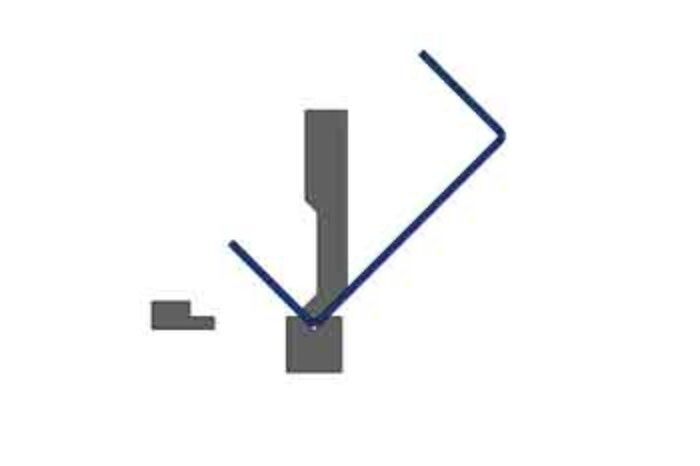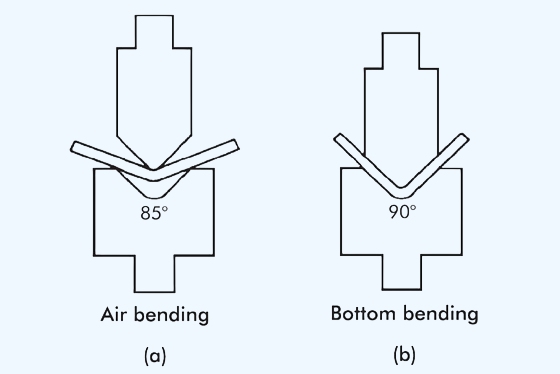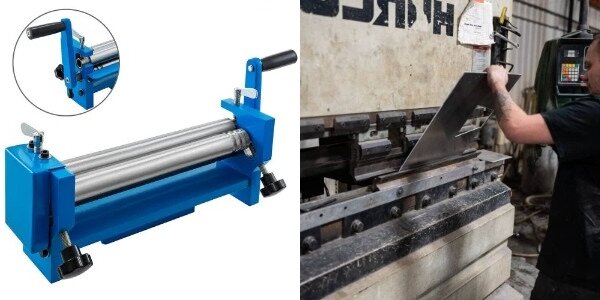평면 밀링은 가공에서 가장 일반적으로 사용되는 방법 중 하나입니다. 디자이너, 엔지니어 또는 제조업체는 이 공정을 이해하고 이 공정을 통해 얻을 수 있는 이점을 이해해야 합니다. 플레인 밀링을 사용하면 재료를 효율적으로 제거할 수 있지만 고려해야 할 과제와 고려 사항이 있습니다. 이 게시물에서는 플레인 밀링의 작동 방식과 다양한 프로젝트에 중요한 기술인 이유를 살펴봅니다.
이 방법은 단순하게 들릴 수 있지만 제조 과정에서 큰 역할을 합니다. 일관된 마감 처리로 부품을 생산하는 데 필수적입니다. 이제 플레인 밀링의 유형을 자세히 살펴보고 다른 가공 방법과 비교해 보겠습니다.
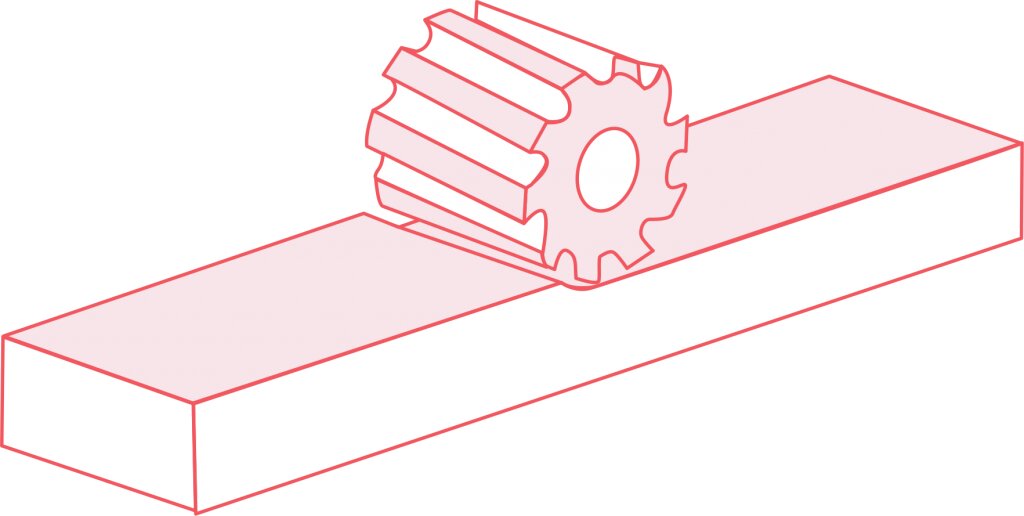
플레인 밀링이란 무엇인가요?
평면 밀링은 회전하는 커터가 공작물을 가로질러 이동하면서 재료를 제거하고 평평한 표면을 만드는 가공 공정입니다. 이 작업은 대부분 수평 밀링 머신을 사용하여 수행되지만 경우에 따라 수직 머신도 사용할 수 있습니다. 평면 밀링의 주요 목표는 표면을 매끄럽게 하거나 홈을 자르는 것입니다.
일반 밀링은 회전 공구를 사용하여 재료를 절단합니다. 커터가 회전하면서 반대 방향으로 이송되는 공작물의 표면을 따라 이동합니다. 작업자는 절단 속도와 깊이를 조정하여 매끄럽고 균일한 마감을 만들 수 있습니다. 이 프로세스는 평평한 표면이나 홈을 일관되게 만드는 데 이상적입니다.
플레인 밀링 커터의 종류
일반 밀링 커터는 가공의 정밀도와 효율성을 달성하는 데 매우 중요합니다. 다양한 유형의 커터에 대해 자세히 알아보겠습니다.
헤비 듀티 플레인 밀링 커터
견고한 일반 밀링 커터는 견고하고 큰 가공 작업을 위해 제작되었습니다. 많은 양의 재료를 빠르게 제거해야 할 때 사용합니다. 이러한 커터는 일반적으로 고속강(HSS) 또는 카바이드와 같은 튼튼한 소재로 만들어집니다.
헤비 듀티 커터는 단단한 금속이나 큰 공작물을 절단하는 데 적합합니다. 이 커터의 톱니는 간격이 넓어 칩을 효율적으로 제거하고 막힘을 방지하는 데 도움이 됩니다.
라이트 듀티 플레인 밀링 커터
경량의 일반 밀링 커터는 덜 까다로운 작업에 사용됩니다. 정밀도를 위해 설계되었으며 작은 공작물이나 부드러운 재료에 잘 맞습니다. 이 커터는 톱니가 더 미세하며 고품질 마감이 필요한 작업에 자주 사용됩니다.
소량의 재료만 제거하고 더 매끄러운 표면이 필요한 작업에 가장 적합합니다. 경량 커터는 일반적으로 HSS와 같은 재료로 만들어지며 정밀도를 우선시하는 산업에서 일반적으로 사용됩니다.
일반 밀링 프로세스: 단계별 분석
플레인 밀링 공정에는 정밀도와 품질을 보장하기 위한 몇 가지 중요한 단계가 포함됩니다. 설정부터 마무리까지 각 단계를 살펴보겠습니다.
1단계: 준비 및 설정
밀링 공정을 시작하기 전에 공작물을 기계에 단단히 올려놓아야 합니다. 설정을 통해 공작물이 올바르게 정렬되고 모든 공구와 재료가 준비되었는지 확인합니다.
2단계: 도구 및 기계 설정
다음으로 작업자는 필요한 사양을 충족하도록 밀링 머신을 조정합니다. 여기에는 재료와 원하는 결과에 따라 적합한 밀링 커터를 선택하고, 적절한 속도를 설정하고, 이송 속도를 조정하는 작업이 포함됩니다.
3단계: 공작물 밀링
모든 설정이 완료되면 밀링 커터가 작동하기 시작합니다. 공작물을 따라 이동하면서 각 패스마다 재료를 제거합니다.
4단계: 냉각 및 칩 제거
밀링 가공 시 열이 발생하므로 냉각수나 에어젯과 같은 냉각 방법으로 온도를 낮추고 공구 손상을 방지합니다. 또한 밀링 과정에서 생성된 칩을 제거하여 절삭 공정을 막지 않고 표면을 깨끗하게 유지합니다.
5단계: 밀링 프로세스 마무리
원하는 표면 마감이 달성되면 밀링 공정이 완료됩니다. 다음과 같은 조정 또는 추가 프로세스가 필요합니다. 디버링최종 제품이 요구 사양을 충족하는지 확인하기 위해 수행될 수 있습니다.
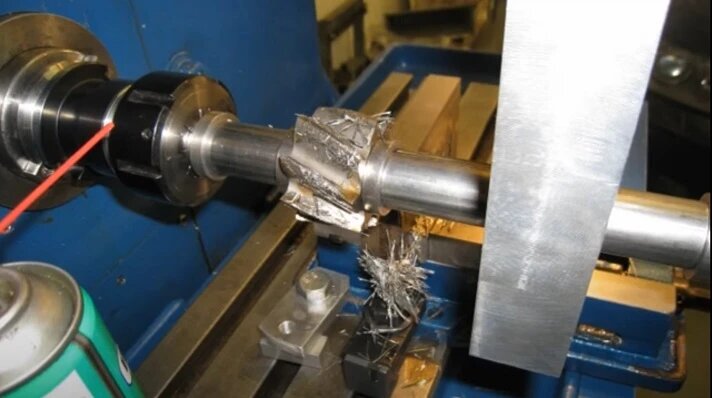
플레인 밀링의 장점과 단점
플레인 밀링에는 여러 가지 장점이 있지만 몇 가지 단점도 있습니다. 두 가지를 모두 이해하면 가공 요구 사항에 적합한 선택 시기를 결정하는 데 도움이 될 수 있습니다.
장점
- 효율적인 자료 제거: 플레인 밀링을 사용하면 특히 고강도 커터로 재료를 빠르게 제거할 수 있습니다. 따라서 더 광범위하고 단순한 부품에 이상적입니다.
- 다재: 금속, 플라스틱, 목재 등 다양한 소재에 사용할 수 있습니다. 따라서 다양한 유형의 프로젝트에 유연한 옵션으로 사용할 수 있습니다.
- 비용 효율적: 적절한 설정을 통해 플레인 밀링은 대량 생산 및 대량 배치에 적합한 경제적인 옵션입니다. 단위당 시간과 비용을 줄이는 데 도움이 됩니다.
- 정도: 잘 조정된 장비와 공구를 사용할 경우 플레인 밀링은 높은 정확도를 제공합니다. 매끄럽고 평평한 표면을 만드는 데 탁월합니다.
단점
- 평평한 표면으로 제한: 플레인 밀링은 주로 평평한 표면을 만드는 데 사용됩니다. 더 복잡한 모양이나 3D 윤곽에는 적합하지 않습니다.
- 표면 마감: 좋은 결과를 얻을 수 있지만 표면 마감이 다른 방법만큼 매끄럽지 않을 수 있습니다. 세밀한 디테일을 위해 추가 마감 단계가 필요할 수 있습니다.
- 공구 마모: 커터는 특히 단단한 재료로 작업하거나 고강도 밀링 작업을 할 때 빠르게 마모될 수 있습니다. 이는 유지보수 및 교체 비용 증가로 이어질 수 있습니다.
- 크기 제한: 기계의 용량에 따라 공작물의 크기가 제한됩니다. 따라서 일반 밀링은 더 크거나 부피가 큰 부품에는 적합하지 않습니다.
일반 밀링의 효율성에 영향을 미치는 요인
평면 밀링의 효율성은 몇 가지 주요 요소에 따라 달라집니다. 속도, 이송, 기계 안정성 및 공구 유지보수가 이 가공 공정을 최적화하는 데 어떻게 기여하는지 살펴보겠습니다.
속도, 피드, 컷 심도의 역할
절삭 속도는 밀링 커터가 회전하는 속도를 제어하여 재료가 얼마나 빨리 제거되는지에 영향을 줍니다. 이송 속도는 공작물이 커터로 이동하는 속도를 나타냅니다. 이는 표면 마감과 절삭력 모두에 영향을 미칩니다. 절삭 깊이는 한 번에 제거되는 재료의 양을 결정합니다.
기계 강성 및 안정성의 중요성
견고한 기계는 밀링 작업 중 진동을 방지하여 커터가 효율적으로 작동하고 정확한 결과를 얻을 수 있도록 도와줍니다. 기계가 불안정하거나 구부러지면 최종 제품에 오류가 발생하고 공구가 더 빨리 마모될 수 있습니다.
일반 밀링의 공구 마모 및 유지보수
공구 마모는 일반 밀링 작업에서 자연스러운 부분이지만, 유지보수를 통해 그 영향을 줄일 수 있습니다. 커터가 작동함에 따라 점차 날카로움이 떨어지고 절단 효율이 떨어집니다. 정기적인 점검과 필요 시 공구 교체를 통해 밀링 공정을 원활하게 유지하고 최상의 결과를 얻을 수 있습니다.
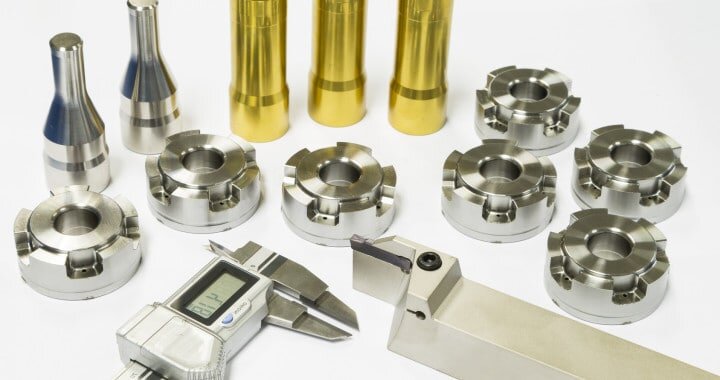
일반 밀링과 다른 밀링 공정 비교
각 밀링 공정에는 고유한 장점과 특정 용도가 있습니다. 일반 밀링과 다른 표준 방법을 비교하여 차이점을 더 잘 이해하고 프로젝트에 적합한 방법을 선택해 보겠습니다.
| 밀링 프로세스 | 목적 | 도구 위치 | 절단 방향 | 모범 사용 사례 |
|---|---|---|---|---|
| 일반 밀링 | 평평한 표면과 홈을 만드는 데 사용됩니다. | 공구가 공작물 위에서 수평으로 회전합니다. | 이 도구는 표면을 따라 자르면서 재료를 고르게 제거합니다. | 적은 정밀도로 대규모 자료 제거가 가능합니다. |
| 페이스 밀링 | 평평한 표면을 만드는 데 사용되며, 종종 더 매끄럽게 마감합니다. | 공구가 공작물 표면에 수직으로 회전합니다. | 이 도구는 표면을 가로질러 절단하여 마감을 개선합니다. | 더 높은 정밀도와 더 매끄러운 마감. |
| 슬롯 밀링 | 슬롯, 홈 및 기타 내부 기능을 만드는 데 사용됩니다. | 도구가 수평으로 회전하며 내부 기능을 잘라냅니다. | 이 도구는 공작물의 내부 부분을 따라 절단합니다. | 홈 및 슬롯과 같은 내부 기능 만들기. |
| 표면 밀링 | 평평한 표면을 마감하고 표면 품질을 개선하는 데 사용됩니다. | 공구가 수직으로 회전하여 공작물 표면 정삭에 집중합니다. | 이 도구는 재료를 제거하여 평평한 표면을 다듬습니다. | 고품질 표면 마감을 위한 마감 작업. |
일반 밀링의 일반적인 응용 분야
플레인 밀링은 다양한 산업 분야에서 정밀한 부품을 만드는 데 필수적입니다. 다양한 산업 분야의 주요 응용 분야를 살펴보겠습니다.
항공우주산업
항공우주 산업에서 평면 밀링은 항공기 날개, 동체 부품, 엔진 부품과 같은 중요 부품에 정밀하고 평평한 표면을 만드는 작업입니다. 이러한 부품은 성능과 안전을 보장하기 위해 엄격한 공차와 매끄러운 마감 처리가 필요합니다.
자동차 산업
자동차 분야에서는 엔진 부품, 변속기 부품 및 기타 기계 시스템을 제조하는 데 플레인 밀링이 사용됩니다. 차량 성능과 신뢰성의 핵심인 매끄럽고 정확한 표면을 가진 부품을 생산하는 데 도움이 됩니다.
건축 산업
건설 산업에서 플레인 밀링은 다음과 같은 구조 부품에 평평한 표면을 만듭니다. 빔열 및 프레임. 많은 양의 재료를 제거하고 추가 처리를 위해 부품을 준비하거나 집회.
의료 산업
의료 산업에서는 의료 기기, 수술 기구 및 임플란트를 위한 정밀 부품을 만들기 위해 플레인 밀링을 사용합니다. 플레인 밀링은 이러한 부품이 정확한 사양을 충족하고 기능과 안전에 필수적인 매끄러운 표면을 갖도록 보장합니다.
결론
평면 밀링은 평평한 표면과 홈을 정밀하게 만드는 데 사용되는 유연하고 효율적인 가공 공정입니다. 항공우주, 자동차, 건설, 의료 등의 산업에서 고품질 부품을 생산하는 데 핵심적인 역할을 합니다.
플레인 밀링으로 생산성을 향상시킬 수 있는 방법을 알아보고 싶으신가요? 저희에게 연락주세요 에서 자세한 정보 또는 맞춤 견적을 요청하세요. 귀사의 제조 프로세스를 더욱 효율적으로 만들 수 있도록 도와드리겠습니다!
안녕하세요, 저는 케빈 리입니다

지난 10년 동안 저는 다양한 형태의 판금 제작에 몰두해 왔으며 다양한 워크숍에서 얻은 경험에서 얻은 멋진 통찰력을 이곳에서 공유했습니다.
연락하세요

케빈 리
저는 레이저 절단, 굽힘, 용접 및 표면 처리 기술을 전문으로 하는 판금 제조 분야에서 10년 이상의 전문 경험을 갖고 있습니다. Shengen의 기술 이사로서 저는 복잡한 제조 문제를 해결하고 각 프로젝트에서 혁신과 품질을 주도하는 데 최선을 다하고 있습니다.

